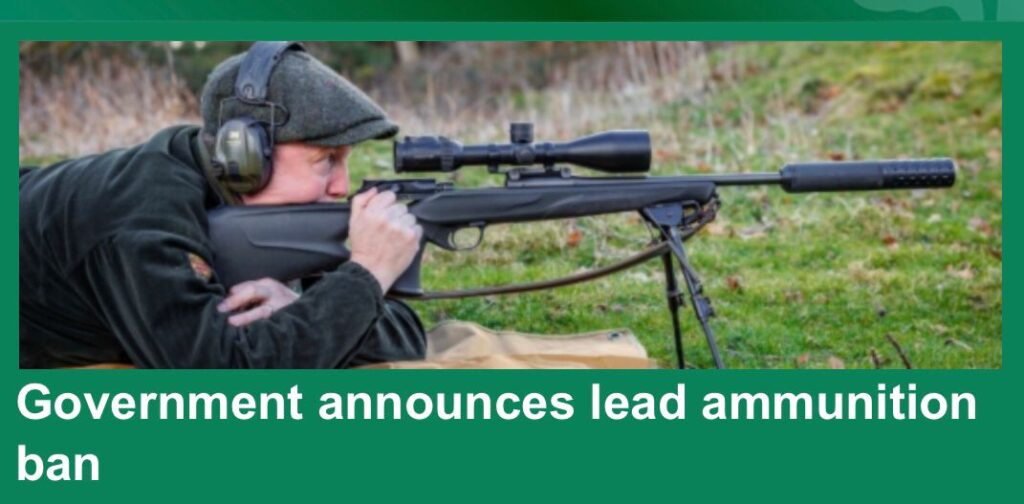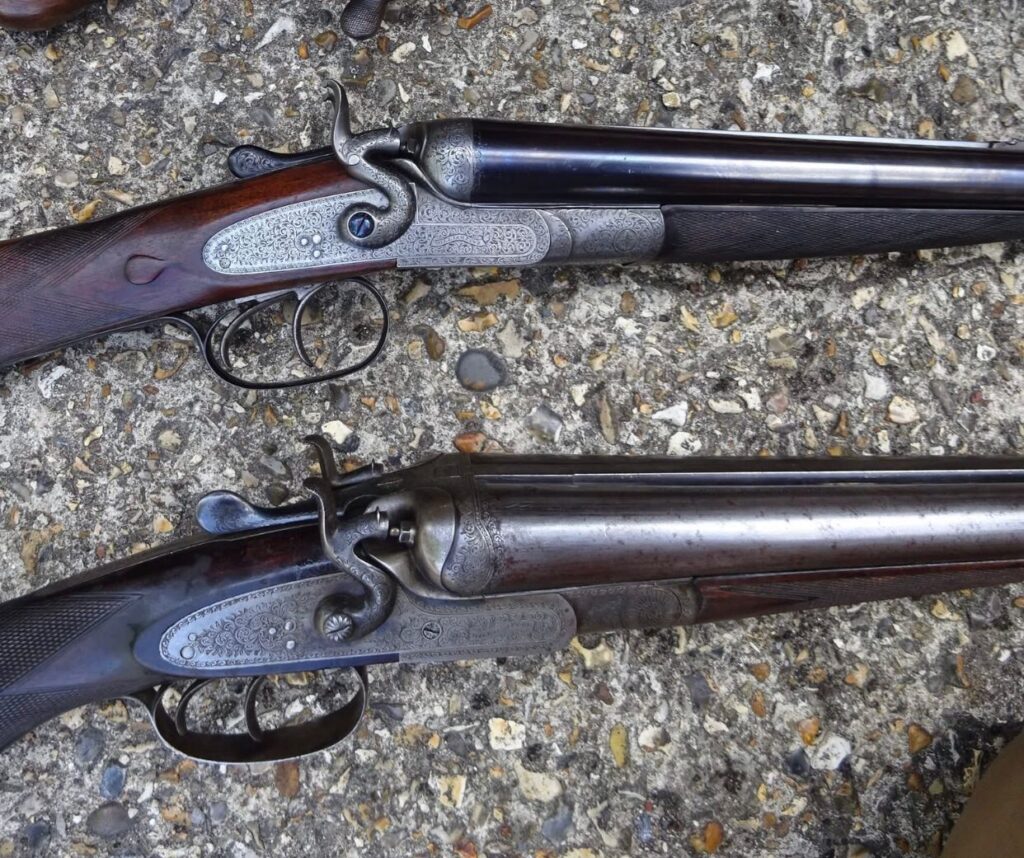BASC
The Government has today (Thursday 10 July) announced that legislation will be introduced to restrict the use of lead in ammunition in England, Scotland and Wales.
The proposals include:
• A ban on shot containing more than one per cent lead
• A ban on bullets with more than three per cent lead
• A three-year transition period for most outdoor shooting, with two years for ranges to introduce pollution controls
Exemptions will include airguns, small-calibre bullets for live quarry and managed outdoor ranges.
BASC has long advocated for a phased transition away from lead shot for live quarry shooting, backed by evidence and support for shooters. We recognise this is a major step and will continue working to ensure the transition is practical, proportionate and supported by supply chains and clear guidance.
Key points
• Lead shot will still be permitted for some target shooting uses under specific conditions
• Airgun pellets and small-calibre bullets used for live quarry shooting will remain outside the scope of the ban
• The full ban is expected to come into effect by summer 2029, following a three-year transition period beginning in 2026
• We will provide further details as the legislative process unfolds and continue engaging with Defra to represent the interests of the shooting community at every stage

Mark Crudgington writes.
The Proposal to Ban Lead ammunition is seriously Flawed
Many who shoot know this yet few have taken steps to try and mitigate this potential destructive proposal. Here is my proposal, sent to Steve Reed MP Environment Minister. How many of you will do something similar??? The clock is ticking
Proportionate, Evidence-Based Regulation of Lead Shot for All Legal Quarry in the UK
I write to express concern over proposals for a blanket ban on the use of lead shot for shotgun shooting in the United Kingdom. While well-intentioned, such a measure risks undermining wildlife welfare, shooting standards, and rural conservation efforts. A more nuanced, evidence-based approach is urgently needed — especially for all species legally shot in the UK with shotguns.
Scope of Concern: All Legal Shotgun Quarry
Lead shot is currently used across the UK for the lawful and sustainable shooting of:
- Gamebirds: Pheasant, red-legged partridge, grey partridge, grouse
- Ground game: Rabbit, and hare in specific contexts (e.g. Scotland)
- Pest birds: Woodpigeon, feral pigeon, corvids (under general licence)
- Predator control: Carrion crow, magpie, gull species
Note: Lead shot is already prohibited for waterfowl (e.g., mallard, teal, wigeon, geese) in England, Wales, and Northern Ireland, and its use over wetlands is restricted under existing regulation.
Each quarry species poses different environmental and ingestion risks — yet the proposed ban applies equally, without distinction. This lacks scientific support and risks worsening rather than improving outcomes for wildlife.
Lead Poisoning: Real But Overstated
Lead can cause toxicosis in wild birds — especially in wetland areas. This is proven through necropsy and tissue testing. However:
- The often-cited figure of 100,000 bird deaths per year is extrapolated from small samples, not directly measured.
- Direct post-mortem studies (e.g., Pain et al.) show 2–4% prevalence of lead toxicosis in wildfowl — translating to 5,000–10,000 birds annually, not hundreds of thousands.
- No robust comparative study exists showing lead causes more bird deaths than avian flu, botulism, or predation — all of which are proven to cause mass mortality events, often affecting tens of thousands in a single season.
Thus, while lead is a hazard, it has not been shown to be the primary or most serious threat to wild bird populations in the UK.
Steel Shot: Ballistically Inferior, More Crippling
A forced transition to steel shot poses serious problems:
- Steel is less dense than lead, reducing penetration at humane ranges.
- Wounding rates increase dramatically when shooters are unfamiliar with choke/shell combinations or are using inappropriate cartridges.
- Studies (e.g., Thomas 2016) and field reports indicate steel may double or triple wounding rates — potentially resulting in >120,000 wounded birds annually, across all quarry types.
- Gamebirds and pest species suffer disproportionately, as crippling often goes undetected — unlike retrieved wildfowl.
The result is greater suffering, not less — undermining the stated animal welfare goals of a lead ban.
Education Cannot Compensate for Ballistic Inferiority
Some policymakers suggest that "shooter education" — teaching correct choke use, range judgement, and non-toxic shot selection — will offset the downsides of lead alternatives.
This is not supported by ballistic reality:
- Steel shot, even when used with wider chokes and larger shot sizes, does not match the downrange energy or pattern density of lead
- Ethical killing range is reduced, making clean kills harder even for experienced shooters
- Wounding is not just a result of ignorance — it's a consequence of steel’s physical limitations, especially on tough birds (e.g. woodpigeon, pheasant, geese) and at longer ranges
Bottom line:
- Shooter education helps marginally, but it cannot fix the fundamental problem: steel shot is ballistically inferior, and its widespread use will inevitably lead to more wounding and suffering across all legal quarry species.
Alternatives Are Cost-Prohibitive and Inaccessible
Other non-toxic options — bismuth and tungsten — are:
- 3–10 times more expensive than lead shot cartridges
- Often unavailable in rural supply chains
- Unsuitable for high-volume pest control or rough shooting where cost and availability matter
This pricing excludes working gamekeepers, crop protection shooters, and pest controllers — many of whom carry out vital conservation and agricultural functions.
Proposed Measures Must Not Promote Ineffective Substitutes
Calls to promote shooter education or subsidised non-toxic alternatives imply that the main problem is a lack of knowledge or money. In fact, the core issue is that no currently available alternative matches the effectiveness, humaneness, and cost-efficiency of lead.
- Education cannot offset the physics of inferior materials.
- Subsidies do not make an ineffective round more ethical or reliable.
- Voluntary use of substandard ammunition should not be encouraged under the illusion it is comparably humane.
Until a viable substitute with comparable ballistic performance exists and is affordable, policies must not pressure shooters toward solutions that worsen outcomes for birds and increase suffering.
Conclusion
The use of lead shot across all UK legal quarry has been sustainable, humane, and effective when used responsibly. A one-size-fits-all ban is:
- Scientifically unsupported in many habitats and species
- Welfare-negative due to increased wounding
- Economically punitive to those who manage and protect our countryside
Until direct, comparative proof shows lead causes more total deaths than other causes (disease, predation, or botulism), regulation must remain targeted and proportionate. This ensures both the conservation and ethical treatment of wildlife — and the survival of a sustainable, rural shooting community.
Mark Crudgington, Gunmaker.
